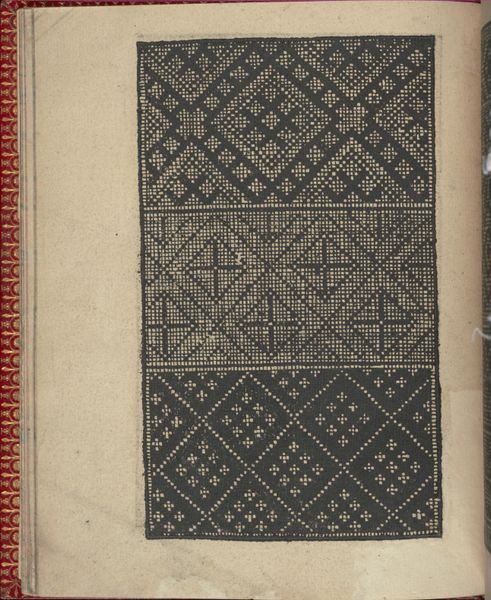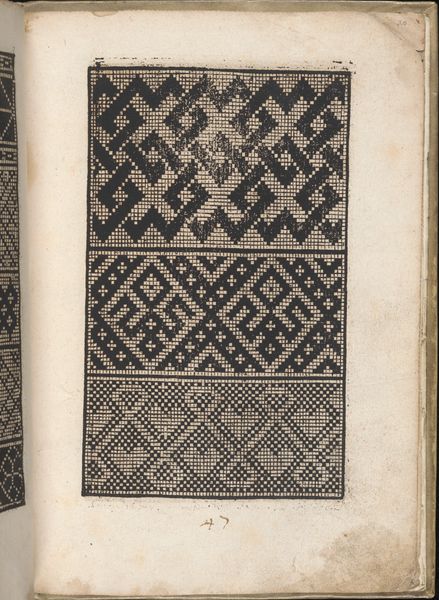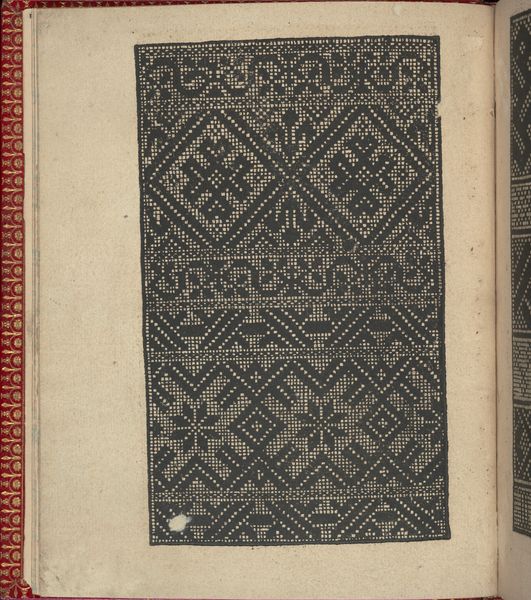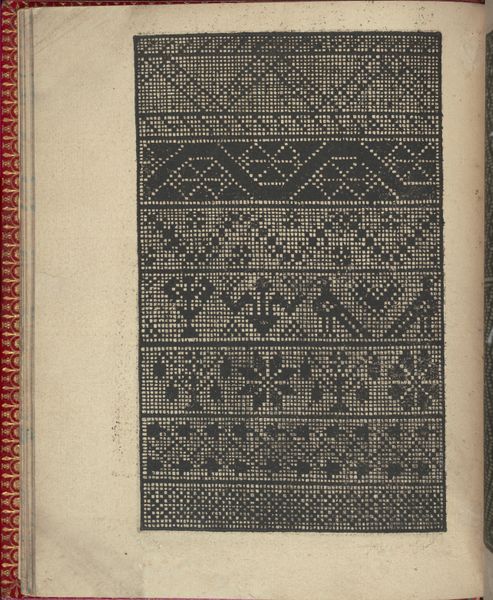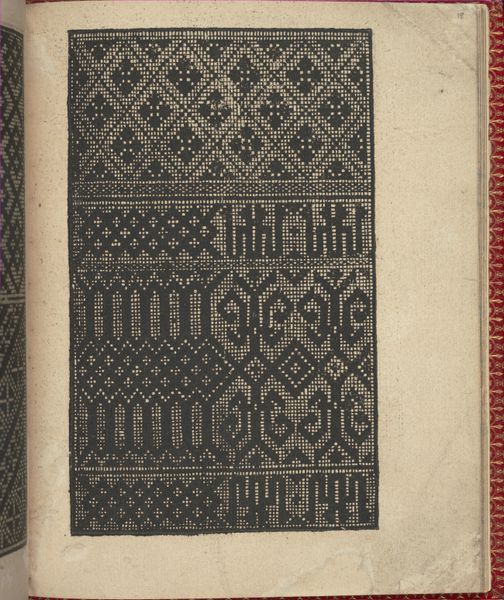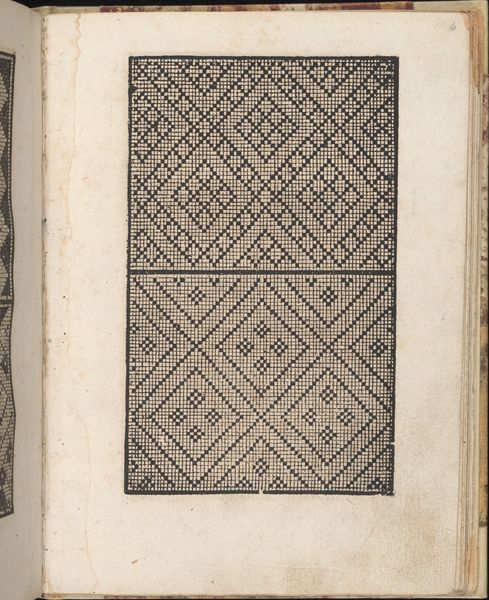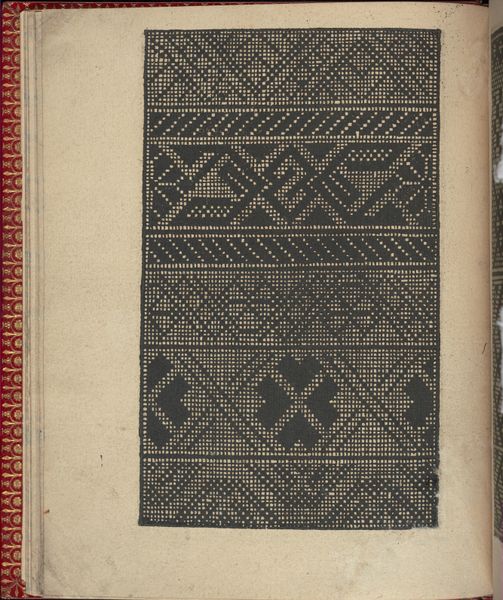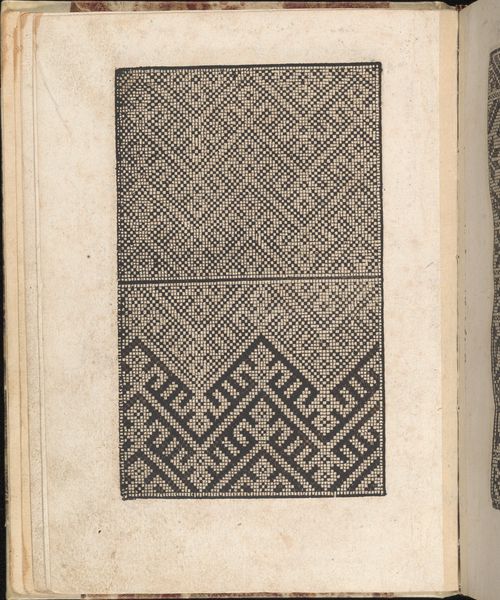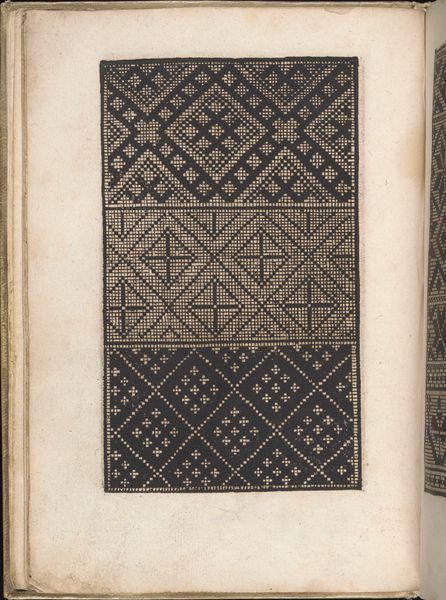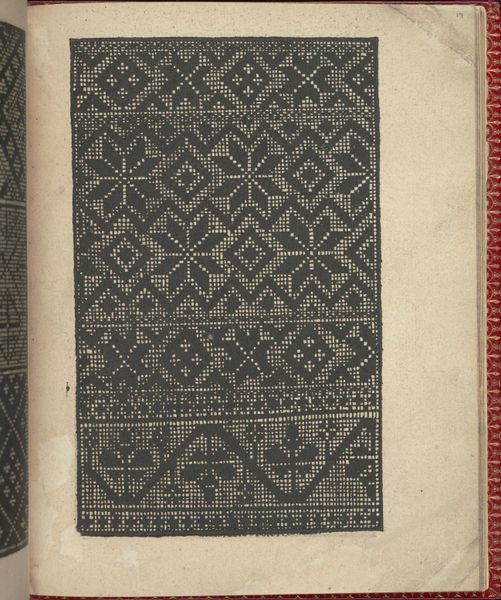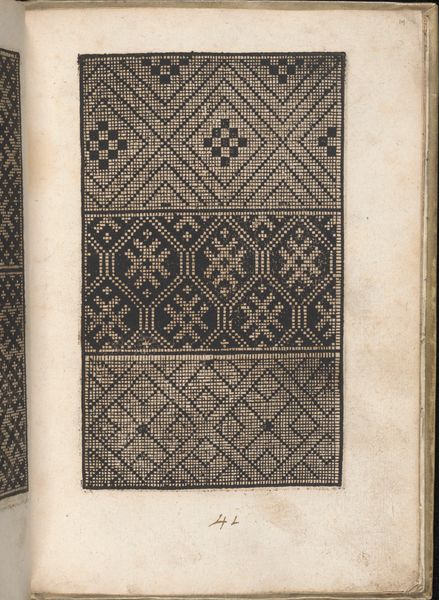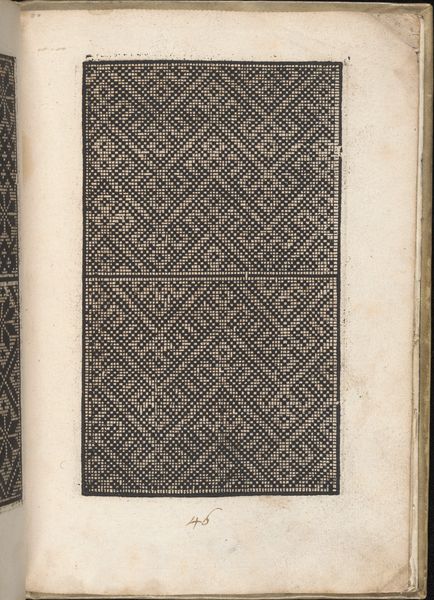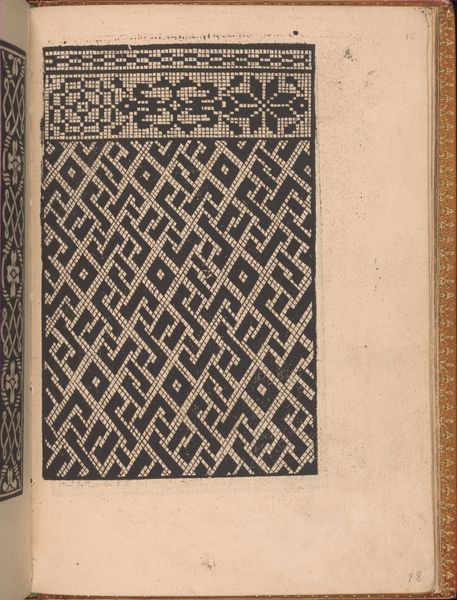
Ce est ung tractat de la noble art de leguille ascavoir ouvraiges de spaigne... page 5 (recto) 1527 - 1540
0:00
0:00
drawing, ornament, print, textile
#
drawing
#
ornament
#
medieval
# print
#
book
#
textile
#
geometric
#
line
Dimensions: Overall: 6 7/8 x 5 11/16 in. (17.5 x 14.5 cm)
Copyright: Public Domain
Editor: Here we have a page from *Ce est ung tractat de la noble art de leguille ascavoir ouvraiges de spaigne… page 5 (recto)*, dating from 1527 to 1540 by Willem Vosterman, currently residing at The Met. It’s a print, showcasing geometric patterns that strike me as both intricate and surprisingly modern. What do you see in this piece, considering its context? Curator: I see more than just a pattern book; I see a powerful tool for female agency in a patriarchal society. Needlework was one of the few avenues of creative expression readily available to women, and books like this were essentially empowering manuals. These designs, with their geometric rigor, demanded precision and skill. Can you imagine the conversations sparked, the communal learning, around these pages? How would that have empowered women, do you think? Editor: I hadn't considered the social implications! I was so focused on the visual aspect of it. So, this wasn't just about pretty patterns, but also about knowledge sharing and, in a way, female autonomy? Curator: Precisely! And the "Spanish work" mentioned in the title was highly prized, reflecting the flow of cultural capital. It’s crucial to consider the intersections of gender, class, and artistic production. Consider the accessibility of print – how did printed guides influence traditional, perhaps localized, designs and patterns, and who benefitted the most from this exchange? Editor: That makes me wonder about the class aspect. Were these books accessible to all women, or mainly those from privileged backgrounds who could afford them? Curator: That’s a critical question! Affordability definitely played a role, highlighting the class divisions even within female communities. But the *idea* of these patterns, circulated more widely, may have been interpreted and adapted across various social strata, regardless of direct access to the original printed material. It’s a complex interplay. Editor: I see, so even without direct access, the visual language of these designs could have influenced broader aesthetic trends. Thank you! This completely shifts my perspective. Curator: It's a great reminder that art doesn’t exist in a vacuum, but is part of the larger cultural and power dynamics within society.
Comments
No comments
Be the first to comment and join the conversation on the ultimate creative platform.
